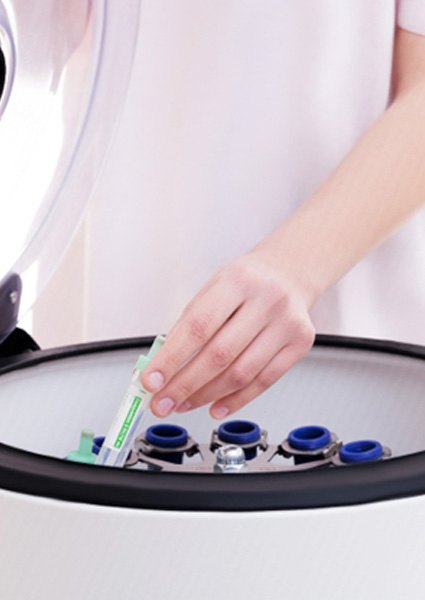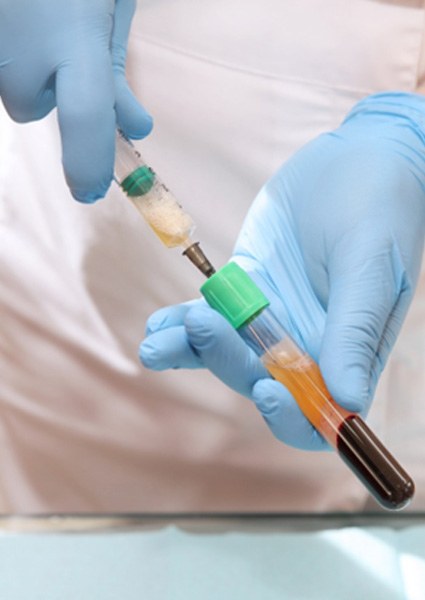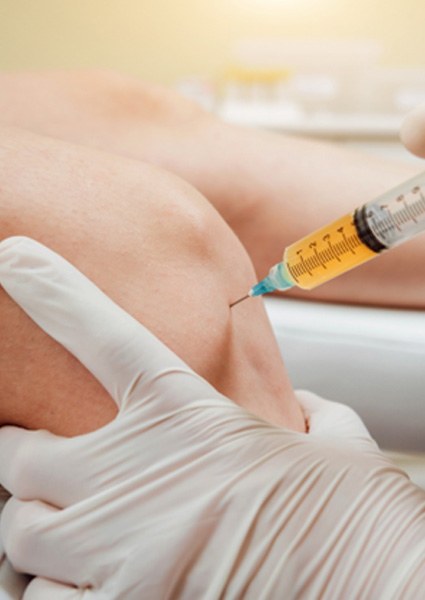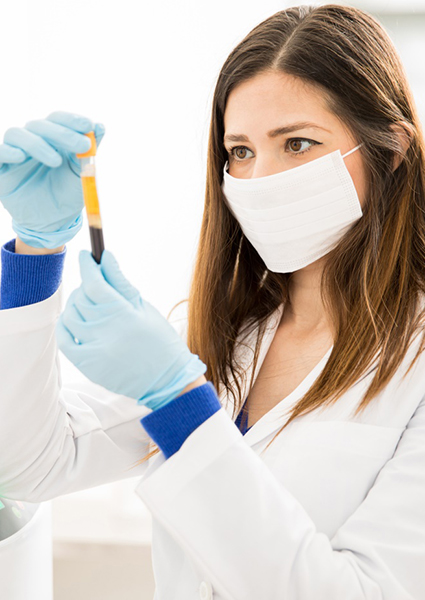Platelet-Rich Plasma (PRP) Therapy—Fort Lauderdale, FL
The Solution Comes from You
PRP is rapidly becoming more popular around the world, and the reason for this is simple—it works! It’s quickly proving to be one of the simplest, safest, and most successful methods to help people dealing with a broad range of acute and chronic injuries, including joint injuries and damage stemming from osteoporosis. We use PRP to treat our patients every day here at the Institute for Non-Surgical Orthopedics, and to see if you should schedule an appointment to come see us, you can learn more about the therapy below.
WHY CHOOSE THE INSTITUTE FOR NON-SURGICAL ORTHOPEDICS FOR PRP THERAPY?
- Refinement Process Creates the Highest Quality PRP
- Compassionate Team with Decades of Experience
- All Injections Made Using Ultrasound Guidance
PRP: The Basics

You have the building blocks for PRP inside you right now, as the substance is derived from blood. When you come to us, after we have given you an exam and determined that you could be helped with PRP, we’ll take a small sample of your blood (about the same amount needed for a routine test).
It will be spun at an extremely high speed in a centrifuge, causing the blood to separate into two parts—liquid plasma (which is mostly water), and PRP, which is thick, yellow, and has an extremely high concentration of platelets, proteins, and many other growth factors.
When the PRP is ready, it will be injected into your injured area using ultrasound guidance to ensure the therapeutic effect is concentrated right where you need it. From check-in to checkout, the process takes about two hours in total.
How PRP Heals the Body

Everything found in PRP is what your body already uses to heal itself, so when it’s injected into injured tissue, this creates an elevated and focused healing response that couldn’t happen otherwise. Primarily, the PRP leads to the accelerated creation of new, healthy tissue. And, because it comes from the patient, it causes practically no side effects.
About two to three weeks after the injection, the body will have had time to implement the PRP, leading to a dramatic reduction in pain and inflammation as well as an increase in strength and stability. Even better, the results will continue to improve as the weeks go by and can be trusted to last for several months to a year before any follow-up is needed.
Conditions that Can Be Treated by PRP

The research for PRP is exceptionally robust and being conducted all the time, and at this point, it has been tested on virtually every part of the body. Here at the Institute for Non-Surgical Orthopedics, we use it every day to treat patients dealing with:
- Neck pain
- Shoulder pain
- Back pain (upper, mid, and lower)
- Hip pain
- Knee pain (ACL/MCL/PCL)
- Ankle pain
- Foot/heel pain
- Elbow pain
- Osteoarthritis (OA)
- Slow healing wounds due to diabetes or other conditions
Platelet-Rich Plasma FAQs

Would you like to learn more about platelet-rich plasma and how it may be able to help you lead a healthier, pain-free life? Our team is eager to talk to you in-person and answer all of your questions. In the meantime, take a look at the following list of FAQs about PRP. Make a note about anything you would like to discuss further so we can address it during your consultation. We look forward to seeing you!
Does PRP Contain Exosomes?
PRP does not contain any live exosomes. Rather, it contains the portion of blood that has a high concentration of platelets, growth factors, and proteins. Together, these substances help to promote the generation of new tissue so the body can heal.
However, while PRP is not a type of exosome therapy, exosomes may be involved in a less direct way. The injections can attract your own mesenchymal exosome to the area. (Exosomes are found in your bone marrow.) They can serve as messengers that support the healing process in the targeted area.
Am I a Candidate for PRP?
To find out if PRP is right for you, you should consult with a qualified medical team. During your appointment, we will learn about your medical history, discuss your symptoms, and perform a thorough exam. We will also ask you about your expectations and goals for treatment. From there, we will be able to make a recommendation about how you should move forward.
In most cases, PRP is considered to be a middle-ground treatment. That is to say, it falls somewhere between very conservative options, such as ice and rest, and more invasive routes, such as surgery. Our team will consider all relevant factors before we let you know where on the spectrum of available treatments we believe your case should fall.
Are PRP Injections Painful? Are They Safe?
Patient comfort is of paramount importance to us. Therefore, we use a local anesthetic when administering PRP therapy. You should feel very little when the PRP is being injected into your body. As the anesthetic wears off, you might notice some mild soreness and bruising. Such issues usually resolve in a few days.
You can be confident that PRP therapy is safe. Since the injected material comes from your own blood, there is almost zero risk that you will react badly to it. Plus, infections are nearly unheard of with this type of treatment.
How Many Times Will I Have to Undergo PRP Injections?
Some patients notice a significant reduction in pain within a few weeks of their initial PRP injections. They may not need a second visit to our office.
In other cases, such as when a patient has been dealing with a chronic condition, multiple sessions may be necessary. We typically space the appointments 4 – 6 weeks apart. Up to three visits within a span of six months may be necessary to achieve the desired results.









